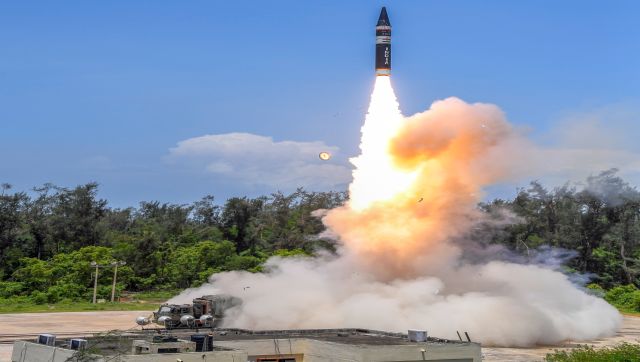India on Saturday successfully tested the new generation nuclear-capable ballistic missile ‘Agni P’ from Dr APJ Abdul Kalam island off the Odisha coast. “Test carried out by DRDO at 11.06am. Telemetry, radar, electro-optical stations and downrange ships positioned along eastern coast tracked and monitored missile trajectory and parameters. Missile followed textbook trajectory, meeting all mission objectives with high level of accuracy,” the Defence Research and Development Organisation said in a statement.
#WATCH | Today India successfully testfired the nuclear-capable strategic Agni Prime missile off the coast of Odisha from Balasore.
— ANI (@ANI) December 18, 2021
(Source: DRDO) pic.twitter.com/wSgWKOKtQG
Defence Minister Rajnath Singh congratulated the Defence and Research Development Organisation for the successful flight test and expressed his happiness over the system’s performance. Here’s everything you need to know about this nuclear-capable ballistic missile. The Agni Prime, known also as the Agni P, is a medium-range ballistic missile developed by the Defence Research and Development Organisation as a successor for Agni-I and Agni-II missiles. It is the sixth missile in the Agni (missile) series of ballistic missile. According to the DRDO, the ‘Agni P’ is a two-stage canisterised solid propellant ballistic missile with dual redundant navigation and guidance system. In simple terms, canisterisation of missiles reduces the time required to launch the missile while improving its storage and mobility. It has a range of 1,000-2,000 kilometres, making it capable of covering vital targets all across Pakistan. The Agni P, according to defence experts, weighs 50 percent lesser than the Agni 3 missile and can be launched from rail or road. Additionally, it can be stored for a longer period and has easy movability, making it a great asset for the country’s defence systems. The missile comes with new composites, propulsion systems, innovative guidance and control mechanisms, besides the latest navigation systems. A paper published by Timothy Wright and Joseph Dempsey of the International Institute for Strategic Studies, also noted that the new missile appears to be wider in diameter, potentially allowing for a larger payload to be accommodated, thereby providing India with greater flexibility and targeting options. While there were suggestions that the Agni P would replace Prithvi, Agni 1 and Agni 2 series of ballistic nuclear missiles that is not the case. According to a report in The Print, a source had said that the Agni P was not a replacement; it was a part of the Agni series of missiles with new modern features, which makes it very manoeuvrable and increases the accuracy. The Agni P missile was first tested back in June from Dr APJ Abdul Kalam island off the coast of Odisha.


)

)
)
)
)
)
)
)
)



